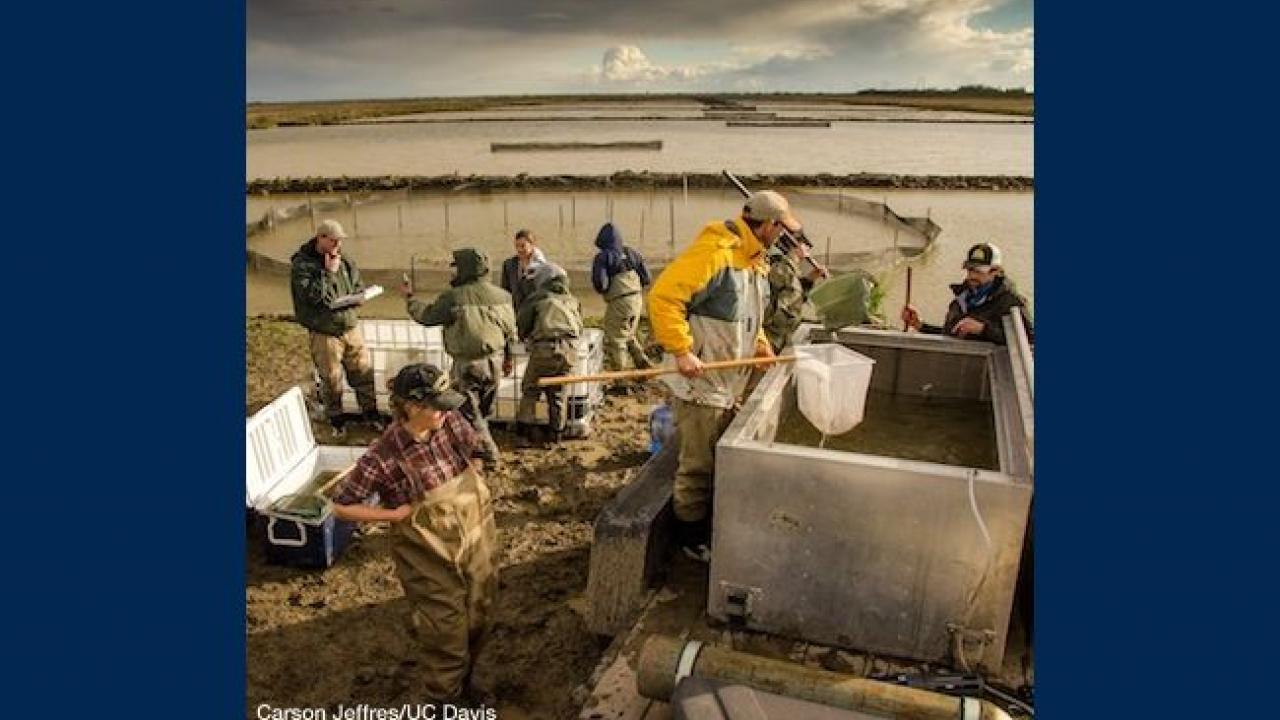
Project Nigiri Celebrates Five Years on the Floodplain
Project Nigiri began as an investigation to using harvested rice fields as potential salmon nurseries that could help boost struggling Central Valley populations. The project takes its name after a Japanese form of sushi that has a slice of fish atop a compressed wedge of vinegared rice.
During these five years, researchers at the Center for Watershed Sciences have found that off season agricultural fields can provide critical habitat for endangered fish. Within these fields juveniles grow much faster and bigger than those released in the Sacramento River. As a result, these bigger juveniles survive better when they reach the ocean and are more likely to return as spawning adults.
This year, the project will compare the food web productivity and fish growth among three different kinds of river habitat: a flooded rice fields, an agricultural canal, and the Sacramento River.
“At this point, we feel confident that giving native fish access to the food-rich environment of the floodplain will play a critical role in recovering imperiled salmon,” said Carson Jeffres, field and lab director of the UC Davis Center for Watershed Sciences. “Now we are interested in how food made on the floodplain can benefit the entire river and Delta.”
To read an extended interview and find out more information about Project Nigiri, explore the links below.
Nigiri Project Mixes Salmon and Rice Fields for Fifth Year on FloodPlain (UC Davis Press Release)
Nigiri Project: Growing Rice and Salmon on a floodway (Center for Watershed Sciences)
